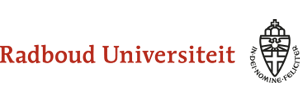American English Phonetics
Another American English Faculty Project
2.2 The past (participle) endings
The English plural morpheme has three shapes (or ‘allomorphs’): /ɪd/, /t/ and /d/. They are used as follows:
Shape 1
/ɪd/ after /t,d/, as in fitted, loaded;
fitted – /ˈfɪt̬ɪd /
loaded – /ˈloʊdɪd/
Shape 2
/t/ after the fortis obstruents /p, k, f, θ, s, ʃ/, as in helped, knocked, stuffed, pronounced, leashed;
helped – /hɛlpt/
knocked – /nɑːkt/
stuffed – /stʌft/
leashed – /liːʃt/
Shape 3
/d/ in other situations, i.e. after /b, g, v, ð, z, ʒ, m, n, ŋ, l, r/ and after all vowels, as in stabbed, bagged and in showed, tied, etc.
stabbed – /stæbd/
bagged – /bægd/
showed – /ʃoʊd/
tied – /taɪd/
In irregular verbs these rules of course do not apply.
Note that –edly is always pronounced /ədli/ when the accent falls on the last syllable of adverbs:
| marked | /mɑrkt/ | markedly | /ˈmɑrkədli/ |
| assured | /əˈʃʊrd/ | assuredly | /əˈʃʊrədli/ |
but: good-humouredly /ˈgʊd ˈhjuːmərdli/.
